Anyone who reads this blog regularly knows I absolutely love Germany, because I think it’s an amazing country with so many incredible places to visit and so much history. I’ve posted previously about things to do in Berlin and a perfect itinerary for visiting, as well as day trips outside of the city – including Potsdam and Sachsenhausen. However, one of my absolute, favourite things to do in Berlin is to visit the Olympic Stadium – which is just a short train ride outside of the city centre and can be done as a half day trip. I’ve visited a couple of times, and it’s such an impressive site with so much to see and do.
Contents
- Contents
- Why a visit to Berlin’s Olympic Stadium is worthwhile
- What to see at the Berlin Olympic Stadium
- Berlin Olympic Stadium Site Information
- How to get to Berlin Olympic Stadium
Why a visit to Berlin’s Olympic Stadium is worthwhile
This Olympic Stadium was built for the 1936 Olympic Games in Nazi Germany. Many of the participating countries would only a few years later be fighting against Germany in WW2. The Nazis predictably exploited the opportunity of hosting the Games for an extravaganza of propaganda. They wanted to use the Games to show off the superiority of the ‘Aryan Race’, likening athletes to warriors and putting on a show for the world.
However, instead of that being the lasting memory, the highlight of these games were the four gold medals that Jesse Owens won – a black athlete, the best of the best, becoming a symbol against that ‘Aryan supremacy’ ridiculous ideology. His name still stands on the winners board by the Olympic cauldron in the stadium and just being in such a place feels monumentous.
The Olympic Stadium itself is an example of Nazi monumental architecture. Together with those in Nuremberg, the Olympic complex in Berlin is the largest example of such architecture. As well as the massive stadium itself, there are a number of sculptures, a huge bell tower, and two big columns between which the Olympic rings are suspended.
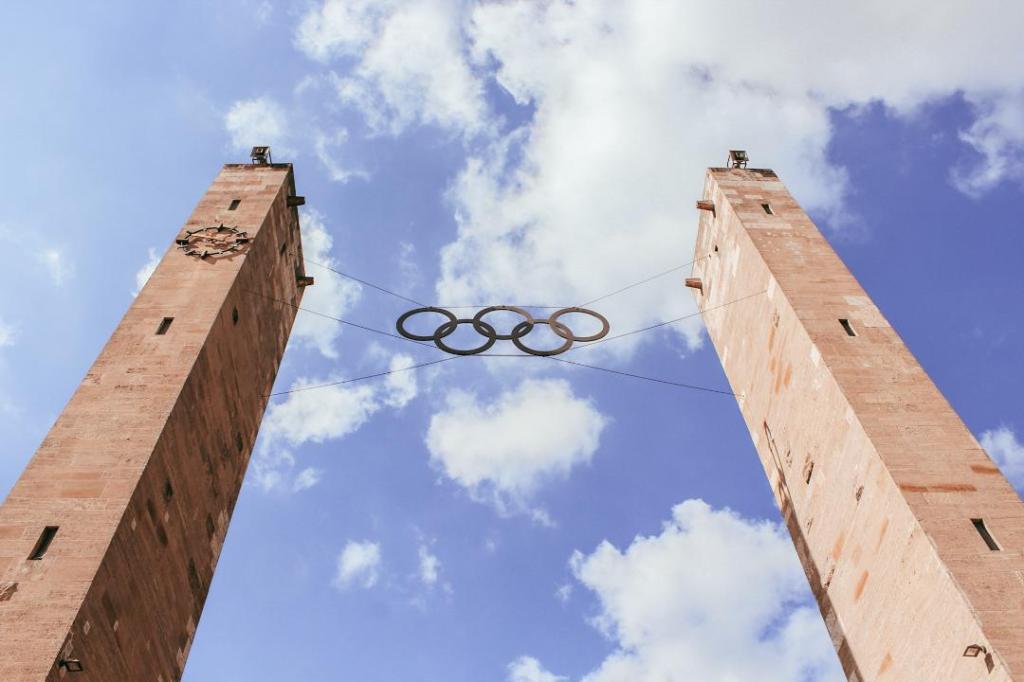
In more modern history, this stadium is also where the incredible Usain Bolt broke the 100m world record in 2009, running 9.58 seconds – a record which still stands today.

It’s also just a beautiful site to walk around, with lovely views. The architecture is interesting, and the whole complex contains lots of buildings to explore. The site is also home to Hertha Berlin FC (soccer club), so you can see their training grounds too. All in all, in my humble opinion, it’s one of the best half day trips from the centre of Berlin and well worth a few hours of your time.
What to see at the Berlin Olympic Stadium
The Olympic Rings
Approaching the stadium, the first thing you will see is the classic view of the 2 columns with the Olympic rings suspended between them in front of the stadium. This is also the main entrance to the site, and as you approach closer the size of them really strikes you and makes for a beautiful shot.

The Visitor Centre/Shop
The shop sells books on the history of the stadium, as well as postcards and leaflets. It also sells Hertha Berlin kit and souvenirs for anyone there for the football. It’s also possible to purchase tickets to then access the stadium via the visitor centre.
The Stadium itself
To enter the stadium itself, you can either go it alone, or take a tour. On the go it alone option, you can wander at your own pace. You are able to walk round the colonnades on the outside, go in amongst the stands, go up to the Olympic cauldron and read the 1936 winners board. There are also information boards throughout the complex so you can learn about the history of the site. You are also able to get an Audio Guide from the shop if you do want a bit more information, or you can download as an App on your smartphone and listen there.

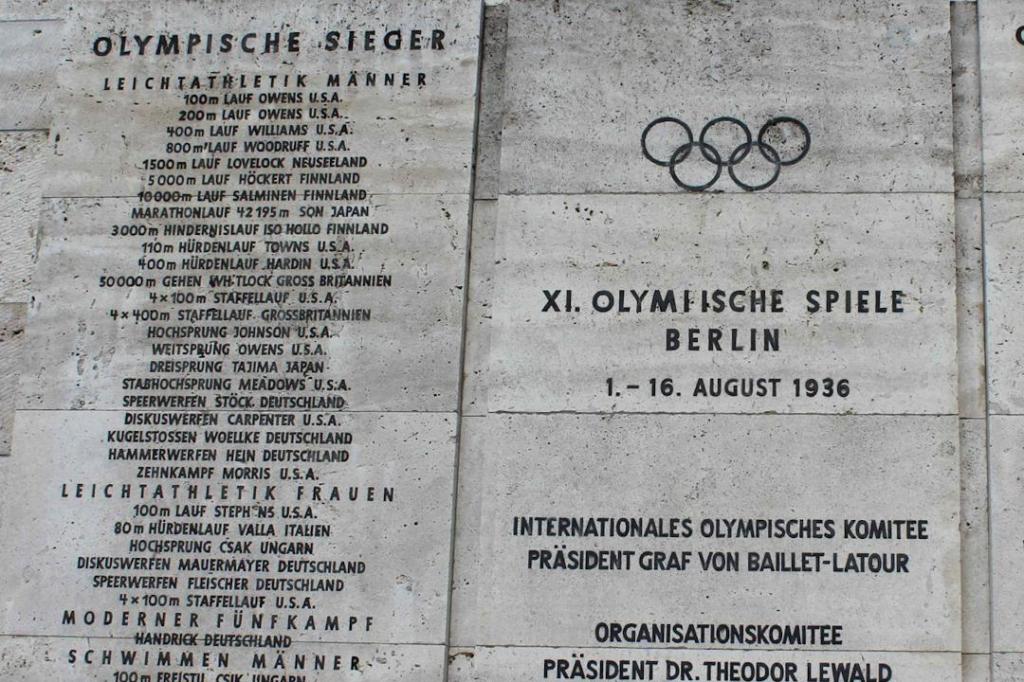
If you opt for a guided tour, you will probably learn a bit more on the history, as well as see more of the stadium, such as actually inside locker rooms etc which are normally inaccessible to the public.
The Grounds
Walking around the stadium is where you can come across the most Nazi history. The outer facade of the stadium really shows the expected elements of Nazi intimidation architecture, with its square columns and iron torch lamps.

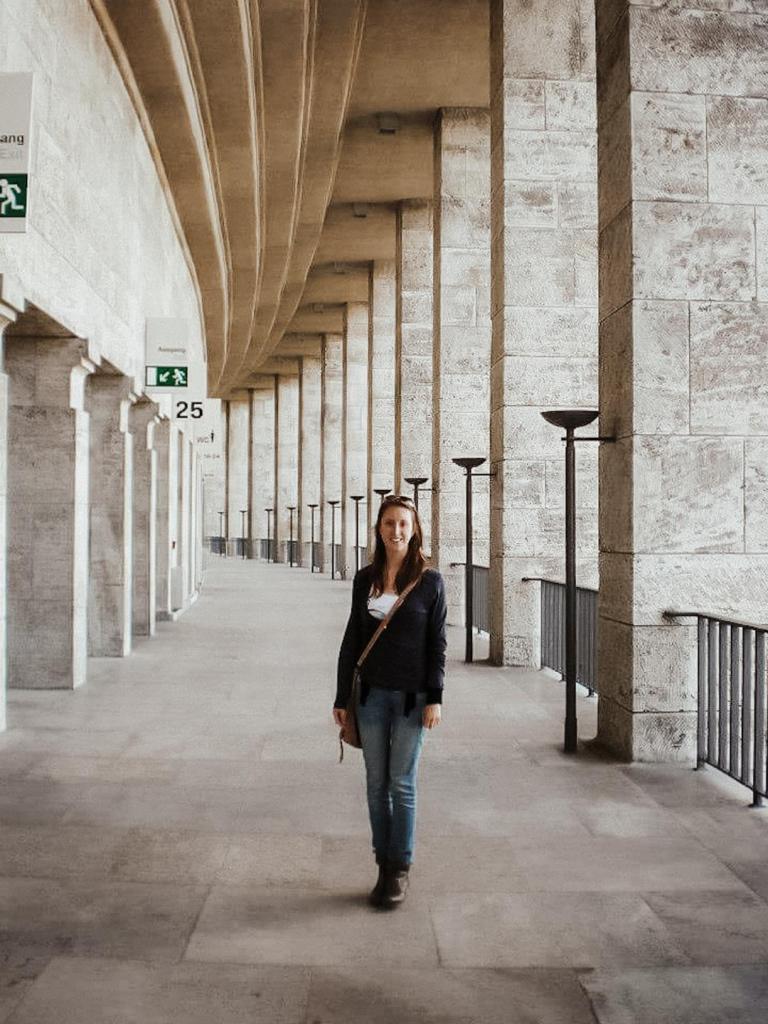
One of the most interesting items in the grounds is the Nazi relic – the Olympic Bell. Previously this was hanging in the Bell Tower, but is now stranded outside the stadium’s southern site. On the bell are depictions of the Brandenburg Gate and a Reich Eagle clutching the Olympic rings in its talons. At the bottom rim of the bell you can spot a couple of only slightly altered swastikas. The bell also has a huge hole from when it was hit during WW2 bombings.
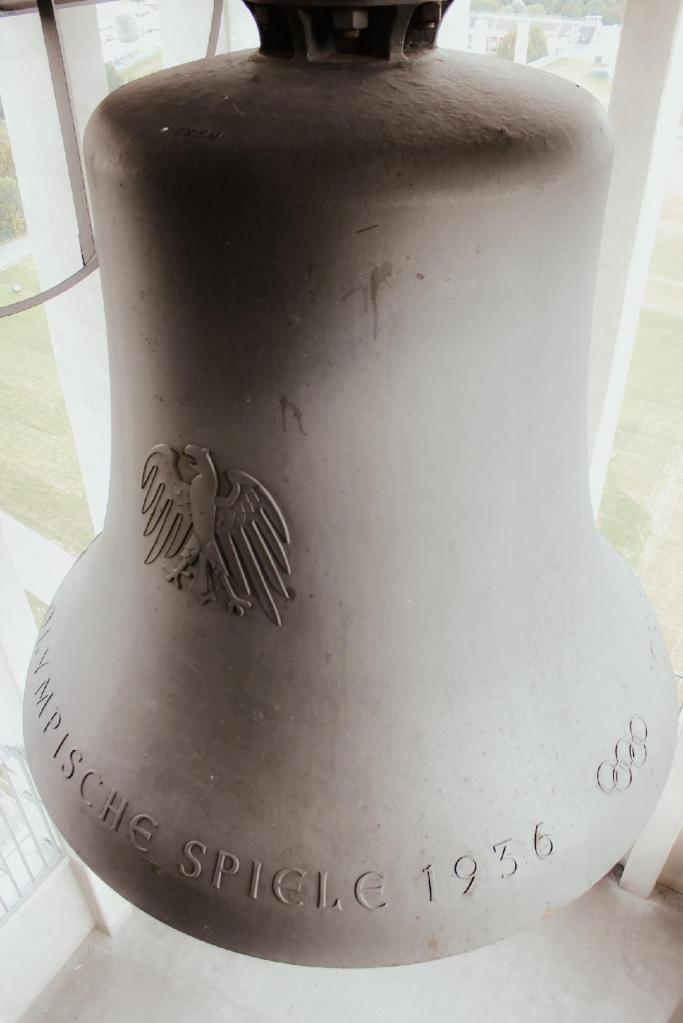

More Nazi elements can be found in the form of the huge stone sculptures, which mainly show muscular, naked men – or equally muscular horses. In addition, there’s the Marathon Gate – the gap in the stadium’s walls aligned with the main axis of the stadium and the bell tower behind it. This is also where the historic fire cauldron for the Olympic Flame of 1936 still stands.
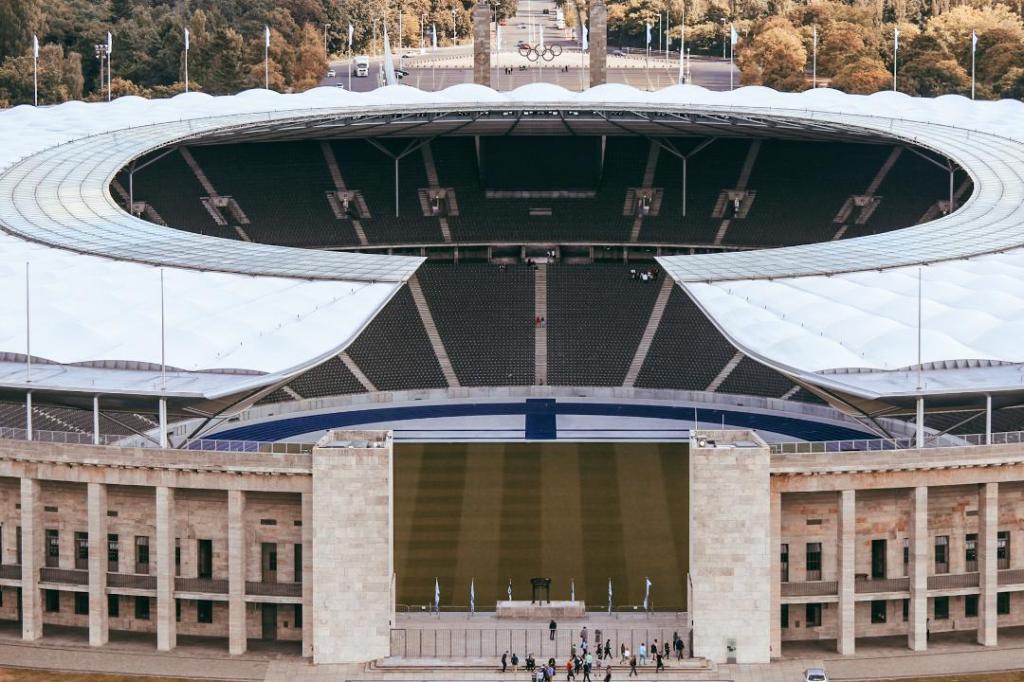
Moving to more modern times, there is then also a row of stones honouring German Olympic champions since 1936, as well as a walk of fame for the winners of the German Football cup over the years.
The Swimming Pool
At the northern side of the stadium is the old swimming pool, which again was used for the 1936 games. Amazingly the swimming pool is still in use, hosting European games as recently as 2015. When I’ve visited it was in use and so great to see locals splashing about still using it. So bring your swimming gear if it’s a hot day and you fancy a dip!
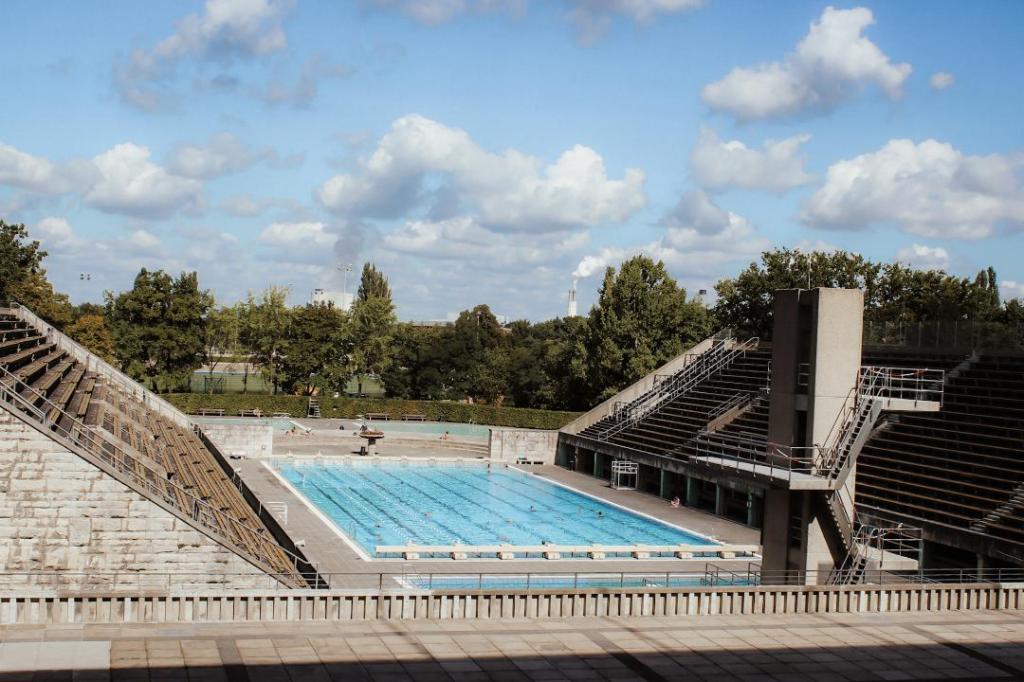
The Maifeld and Bell Tower
In front of the stadium is a huge field, which was once the place where Hitler’s parades and gatherings would take place. Today it’s a nice field, used for cricket, outdoor events and other sports. The highlight however is the Bell Tower. This is a separate sight in itself, and has to be accessed independently of the rest of the stadium complex, including its own entrance fee. You can take a lift to the viewing platform on top of the tower, which commands fabulous views over the Olympic Stadium and the surrounding area.
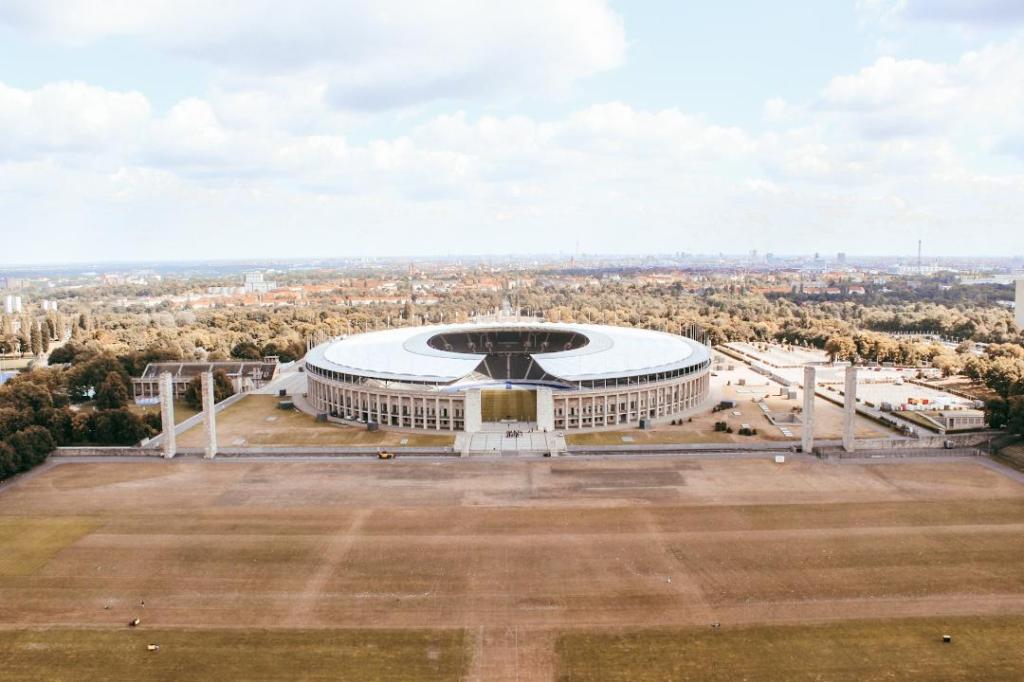
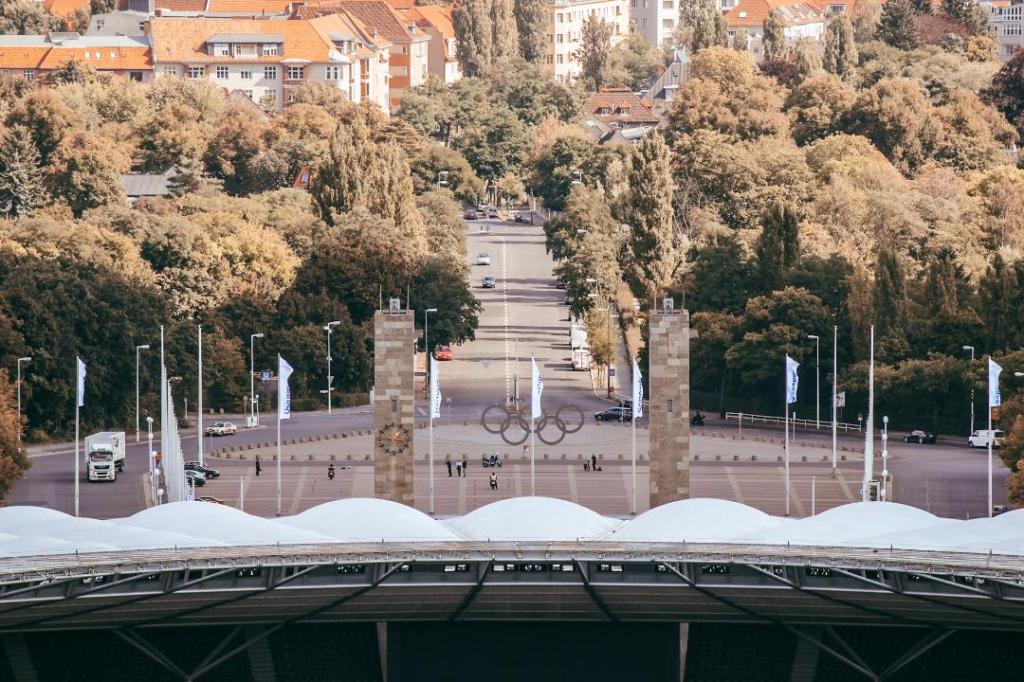
Also in the base of the tower is small exhibition which covers the historical background of the place, including the dark bits of the Nazi showcased games of 1936, including film clips of the event.
Berlin Olympic Stadium Site Information
The Stadium can be viewed from the outside (from a distance) for free at any time. Otherwise, the stadium is open 10am-4pm in winter, and 9am-7pm/8pm in spring, autumn and summer. The cost is 7 Euros for Adults and 4 Euros for children, and in my opinion well worth the price.
The Bell Tower opens April to October only between 9am and 6pm and the admission is 4.50 Euros for adults and 3 Euros for children.
Please also note that if any events are taking place in the stadium, no visits are possible. That said, my suggestion would be to buy tickets for the event instead – I went during the 2018 European athletics championships which was an amazing experience. During preparation work for events (concerts, etc.), parts or even all of the stadium may not be accessible either so check before you go.
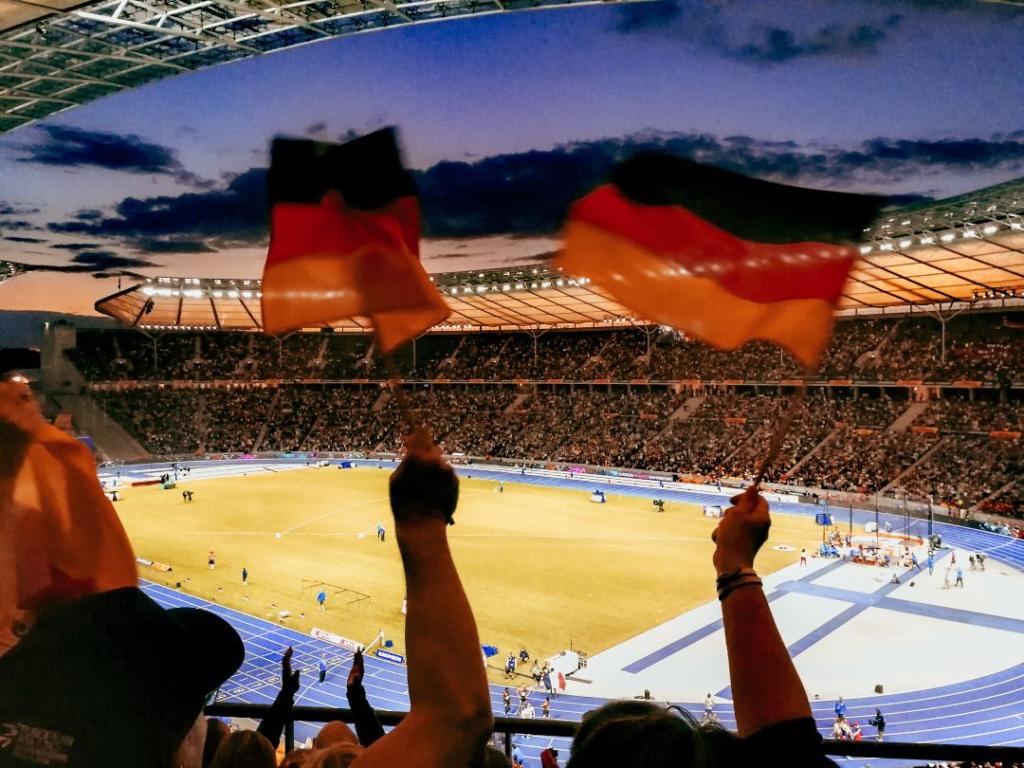
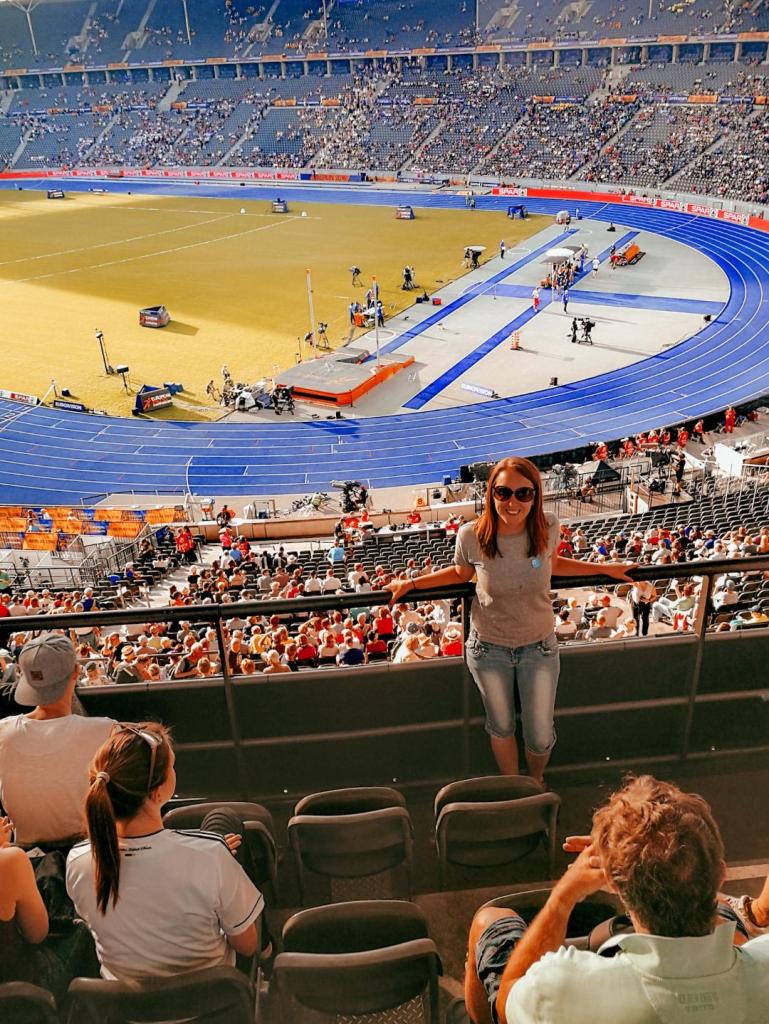
How to get to Berlin Olympic Stadium
The stadium complex is a short distance from the centre of Berlin, and is quite easily accessible by public transport. In total I recommend allocating half a day to the Olympic Stadium as there is so much to see there.
To get from the city centre to the stadium, you can take the U2 metro line which goes through most major Berlin U-Bahn stations. From the stop ‘Olympiastadion’ it’s then about a 500m walk to the stadium. Alternatively you could take the S9 or S75 if you’re on an S-Bahn route that those lines pass through, which also brings you out at a different ‘Olympiastadion’ stop on the other side of the stadium.

As I always say in my posts on Germany, remember to validate your train ticket by holding it under the little grey boxes on the platform so it gets stamped and then board the train so you don’t get a fine.
Thank you so much for reading! I hope you’ve found this post interesting on a lesser visited site in Berlin. If you ever do find yourself looking for something to do in the German capital, then hopefully it’s a fun idea. Stay safe and happy travelling all!
Leave a comment